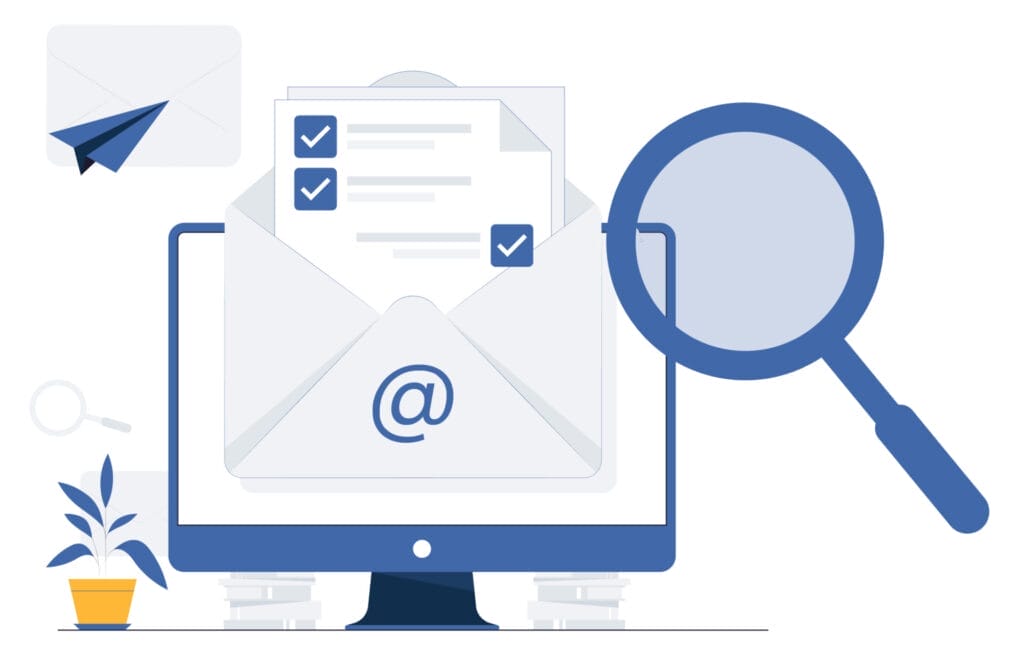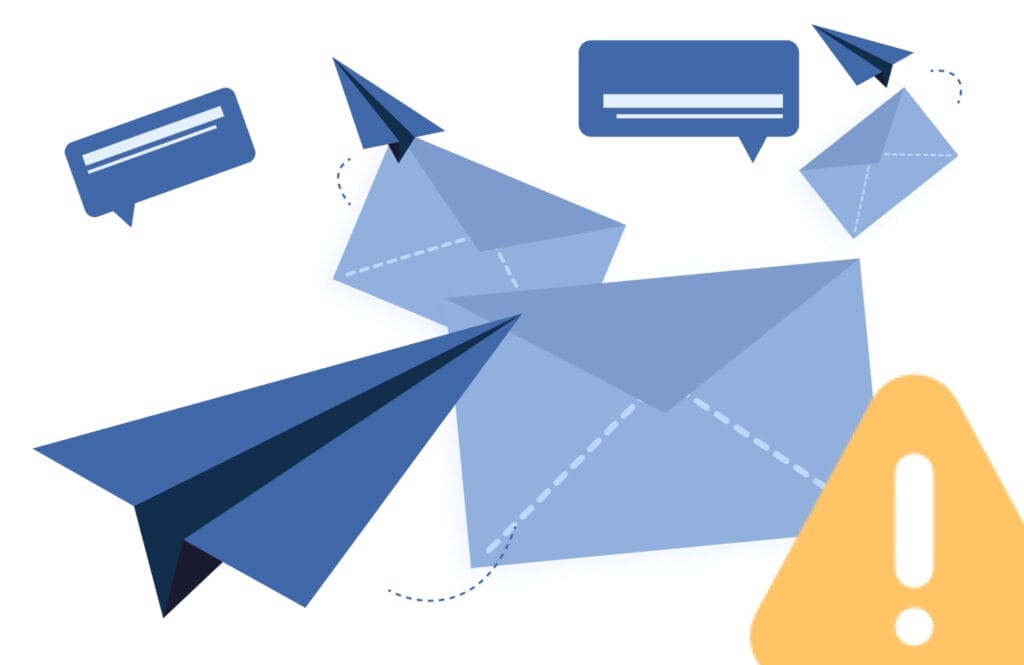Sales prospecting is fast-paced, and the art of following up can make or break a deal. While persistence is important, there’s a fine line between being a diligent salesperson and becoming a nuisance. The burning question many sales professionals grapple with is: how many follow-up emails are too many?
Finding the right balance can significantly raise your success rates, maintaining your professional integrity while effectively nurturing potential clients. In this article, we will explore the intricacies of follow-up emails, from their essential role in sales outreach to best practices and strategies for finding the perfect follow-up frequency.
Understanding Follow-Up Emails
Follow-up emails are a crucial component of any successful sales strategy. They serve as a bridge between initial contact and closing the deal, ensuring potential clients remain engaged and informed throughout the sales process.
However, the effectiveness of follow-up emails hinges on their frequency, content, and timing. Understanding the nuances of follow-up messages can help you strike the right balance, avoiding the pitfalls of over-communication while maintaining a proactive approach to keep your potential client engaged.

The Ideal Number of Follow-Up Emails
One of the biggest mistakes salespeople make is stopping the follow-up too soon. In sales, persistence is key. However, while follow-up efforts should never entirely cease, the frequency and approach should be adjusted over time to avoid overwhelming the prospect. The right balance between persistence and patience is essential for maintaining a positive relationship with potential clients.
Industry Standards and Best Practices
Industry standards suggest that a follow-up message should be brief and to the point. Sales professionals must walk a fine line between being a persistent, professional presence and a pest.
A common best practice is to start with more frequent, multiple follow-ups immediately after the initial contact and gradually space them out as time goes on. For instance, a typical sequence might start with an initial follow-up email the next day, then a second follow-up two days later, followed by weekly intervals, and finally, monthly check-ins if the prospect remains unresponsive.
To ensure your follow-ups are well-received:
- Keep your emails concise and relevant.
- Personalize each email to reflect previous interactions or specific interests of the prospect.
- Focus on providing value in each follow-up, such as sharing helpful resources or addressing potential pain points.
Factors Influencing Follow-Up Frequency
Several factors can influence the optimal follow-up frequency, including the personality of the decision-maker, the type of business, the size of the sale, and the expectations set for when a decision will be made. Consider these aspects throughout the follow-up process.
- Personality of the Decision-Maker: Some prospects appreciate frequent updates and demonstrations of commitment, while others may prefer a more hands-off approach. Tailor your follow-up strategy based on the prospect’s responses and communication style.
- Type of Business: Different industries have varying norms for follow-up communications. For example, B2B sales cycles are often longer and may require more touchpoints compared to B2C sales.
- Size of Sale: Larger, more complex sales typically involve longer decision-making processes and more stakeholders. This often necessitates a more extended follow-up period with strategic touchpoints. Conversely, smaller sales may warrant a more aggressive follow-up schedule.
- Decision Timeline: Always respect the timeline provided by the prospect. If they indicate that a decision will be made in a month, avoid pushing for an answer prematurely. Use the time to nurture the relationship and provide valuable information that helps their decision-making process.

Signs You’re Sending Too Many Follow-Up Emails
Recognizing when you’re overdoing your follow-up efforts is crucial to maintaining a positive relationship with potential clients. Sending too many follow-up emails can lead to frustration, disengagement, and, ultimately, the loss of a valuable prospect. Here are some clear signs that you might be crossing the line with your follow-up frequency:
- Client Frustration: If your prospect starts to show signs of irritation or impatience, such as terse replies or explicit requests to stop contacting them, it’s a clear indicator that your follow-ups are becoming too frequent. Pay close attention to the tone and content of their responses.
- Your Own Doubts: Trust your instincts. If you find yourself questioning whether it’s too soon to send another follow-up email, it probably is. Erring on the side of caution can prevent you from coming across as pushy or desperate.
- Being Ignored: One of the most telling signs that you’re over-communicating is when a prospect starts ignoring your emails altogether. If previously engaged prospects suddenly go silent, it’s a signal that you may need to pull back on the frequency of your follow-ups.
To avoid these pitfalls:
- Space out your follow-up emails more over time, allowing the prospect enough breathing room to consider your proposal.
- Ensure each follow-up email offers new value or information rather than repeating the same message.
- Respect the prospect’s stated timeline and preferences, adjusting your follow-up strategy accordingly.

Strategies for Effective Follow-Up Email Campaigns
Crafting effective follow-up emails is both an art and a science. The goal is to stay on the prospect’s radar while building a relationship that positions you as a trusted partner rather than a pushy salesperson.
The tone of your follow-up emails should always be friendly and approachable. This helps in building a positive rapport with your prospect. Use a conversational tone that reflects your genuine interest in helping them rather than just making a sale. You want to have a meaningful conversation and not come off as pushy with sales terms. Creating a meaningful and personal subject line is important.
Time is valuable for both you and your prospects, so keep your follow-up emails concise and focused. A brief message that gets straight to the point is more likely to be read and appreciated. Highlight the key points or updates in a clear and succinct manner.
Emphasize building and nurturing a relationship rather than just closing the deal. Use language that reflects a collaborative approach. For example, instead of saying, “I need your decision by Friday,” you might say, “I’m looking forward to our continued discussion and finding the best solution for your needs.” Using needy language could deter your prospect’s interest — and maybe make its way into the spam folder rather than your prospect’s inbox.
Each follow-up email after the initial email should offer something of value to the prospect. This could be new information, helpful resources, or solutions to potential problems they might face. Providing value demonstrates your expertise and commitment to helping them succeed.
Frame your follow-up emails and subject lines in a way that positions your relationship as a partnership. Use phrases that emphasize working together and mutual benefit, such as “Let’s explore how we can achieve your goals together” or “I’m excited to see how we can collaborate to meet your needs.” This is an important part of the follow-up sequence.
Hard-selling tactics can quickly turn off potential clients. Instead of aggressively pushing for a sale, focus on being a helpful advisor. Show that you understand their needs and are there to assist them in finding the best solution.
Personalization goes a long way in making your follow-up emails more effective. Reference previous conversations, specific challenges the prospect mentioned, or any relevant details that show you’ve been paying attention to their unique situation.
While your follow-up emails should be relationship-focused, it’s still important to include clear and gentle calls to action. Invite the prospect to a meeting, suggest a next step, or ask for their feedback in a way that feels natural and unobtrusive.
Tips for Finding the Right Follow-Up Frequency
Determining the optimal follow-up frequency can be challenging, but it is crucial for maintaining a productive relationship with your prospects. One effective strategy is to use a specialized tool like Retreva, which has pre-configured algorithms and data-driven insights to help you manage follow-up schedules effortlessly. These tools can analyze your interactions and suggest the best times and frequencies for follow-ups, saving you time and increasing your chances of success.
If you prefer a manual approach, it’s essential to take detailed notes on your interactions with each prospect. Keep track of which follow-up emails yield the best responses and the time intervals between them. This data will help you identify patterns and preferences unique to each prospect.
Start with a more frequent follow-up schedule immediately after the initial contact and gradually extend the intervals as time goes on. For example, you might begin with a follow-up the day after your first meeting, followed by another one three days later, then a week, and so on. Adjust this schedule based on the prospect’s responsiveness and feedback.
Once you identify a winning formula that works for a particular type of prospect or industry, stick to it consistently. Continuously refine your approach based on new data and feedback, but avoid making drastic changes unless necessary. Consistency and reliability in your follow-up efforts can build trust and increase your chances of converting prospects into clients.
By leveraging tools like Retreva or meticulously tracking your manual follow-ups, you can find the right frequency that keeps prospects engaged without overwhelming them, ultimately leading to better outcomes for sales teams.
Mastering Follow-Up Emails
Mastering the art of follow-up emails is a critical skill for sales reps. By understanding the purpose and importance of follow-up emails, identifying the ideal frequency, and recognizing the signs of over-communication, you can create a balanced and effective follow-up strategy.
It’s essential to find a fine line between being persistent and respectful so each email adds value and fosters a genuine relationship. Tailoring your approach to the unique needs of each prospect, using personalized and friendly language, and leveraging tools like Retreva can significantly enhance your follow-up efforts.
Ultimately, the key to successful follow-up emails lies in their ability to maintain engagement, demonstrate your commitment to the prospect’s success, and build a foundation of trust and partnership. By implementing these strategies and continuously refining your approach, you can transform your follow-up emails into a powerful tool for driving conversions and achieving long-term sales success


